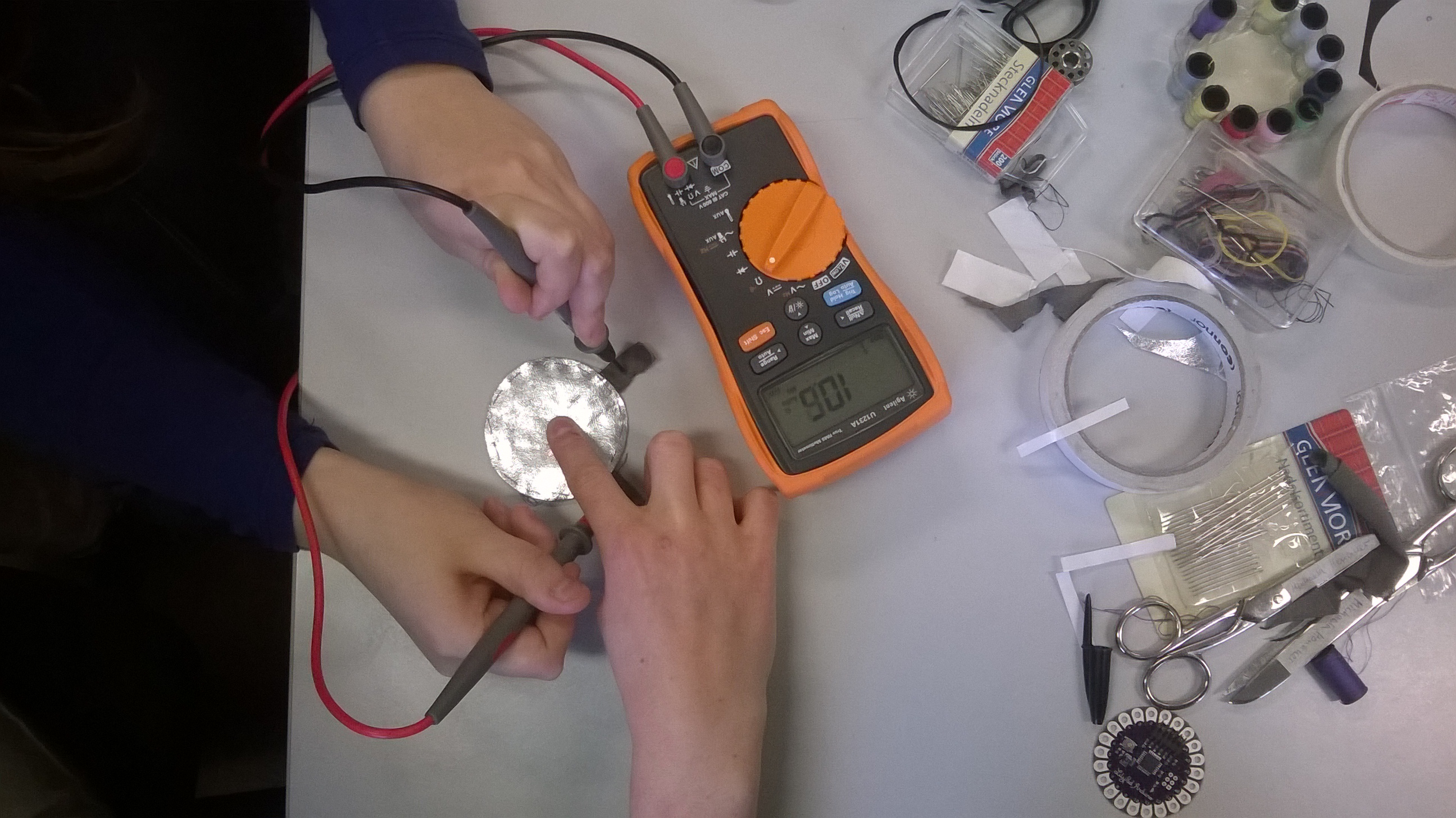
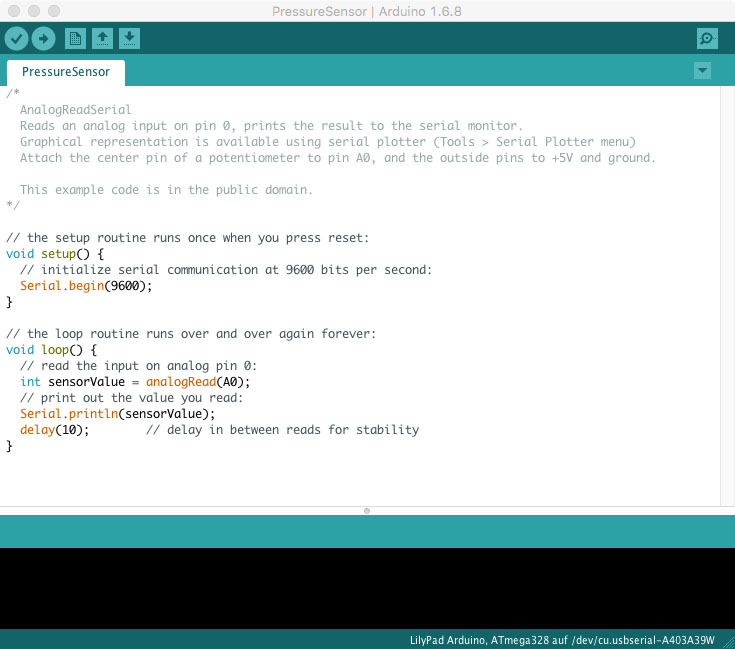
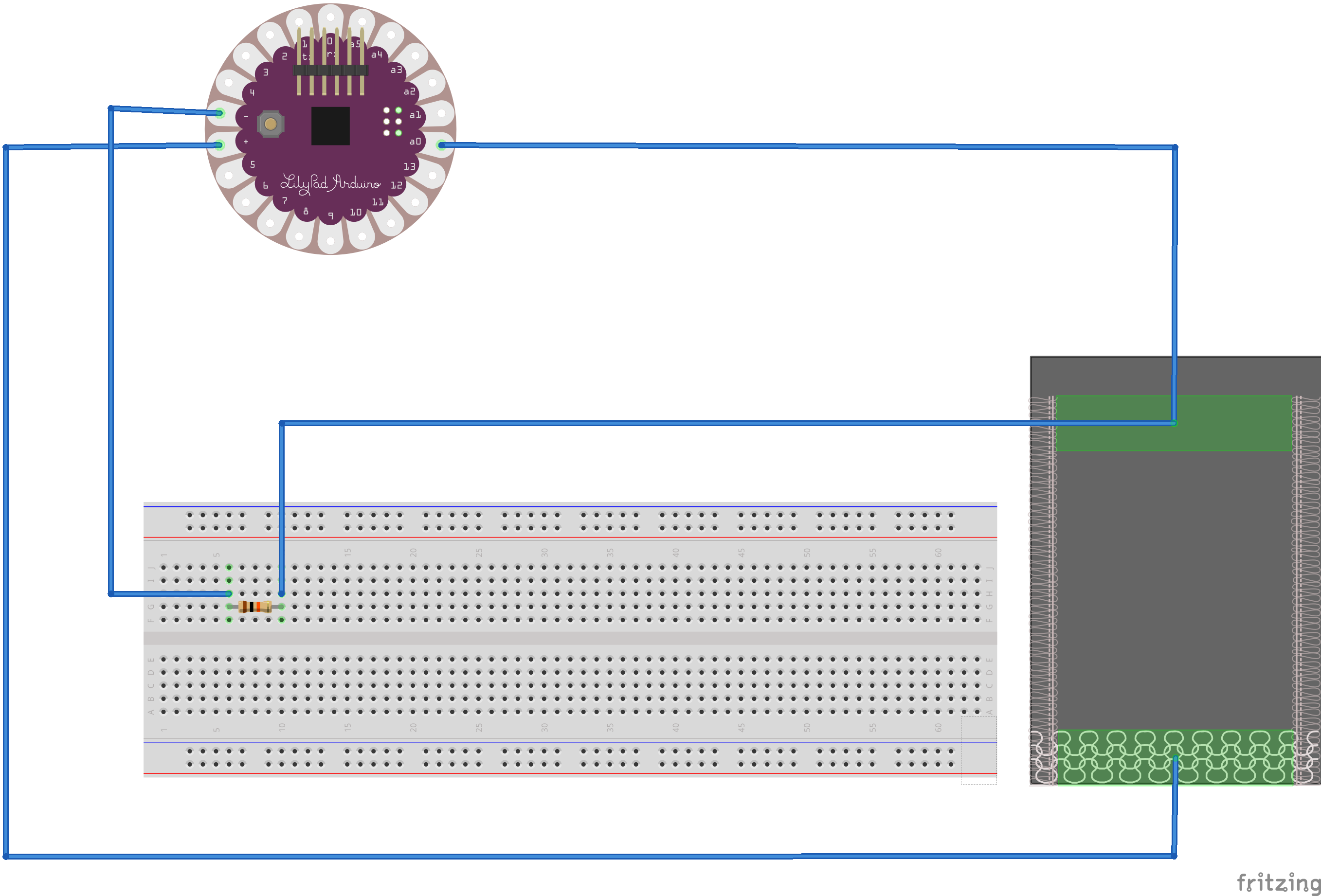
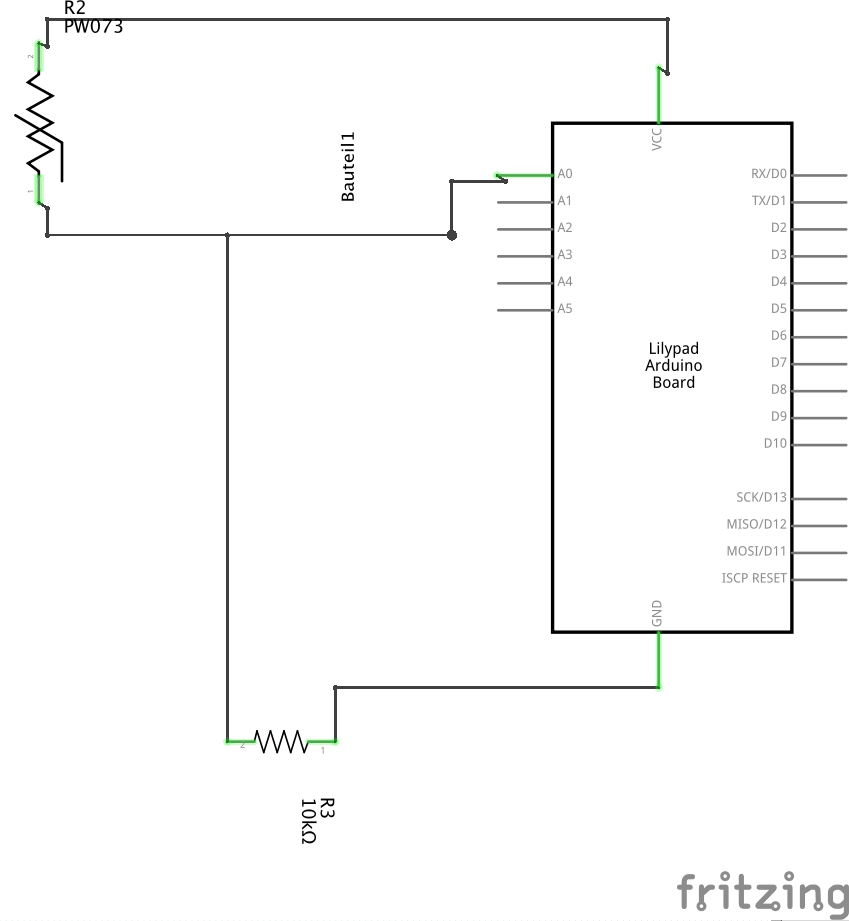
Pressure Sensor 1
Our First Pressure Sensor is made out of two layers of conductive fabric with one layer Velostat in between.
It works well, as you can see the difference between press and release, but therefore it works more like a button, because there are only values for on/off, no range between, so it is not possible to detect with how much force you press it.
Also there is no haptic response when you press the sensor with your finger, you can't feel any difference while pressing it. But this can be an advantage for attaching it to a dress or suit, as it doesn't add much volume to it.
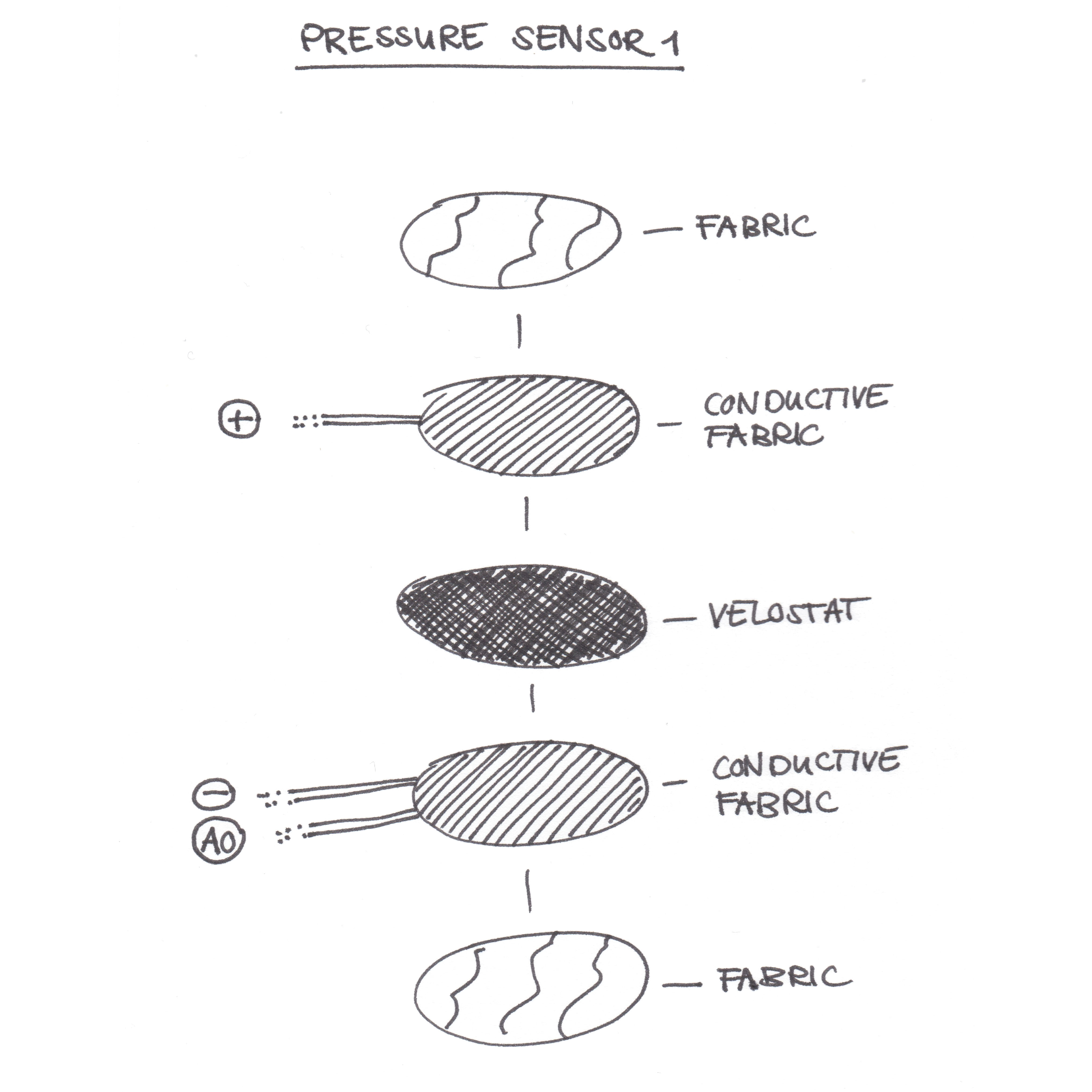
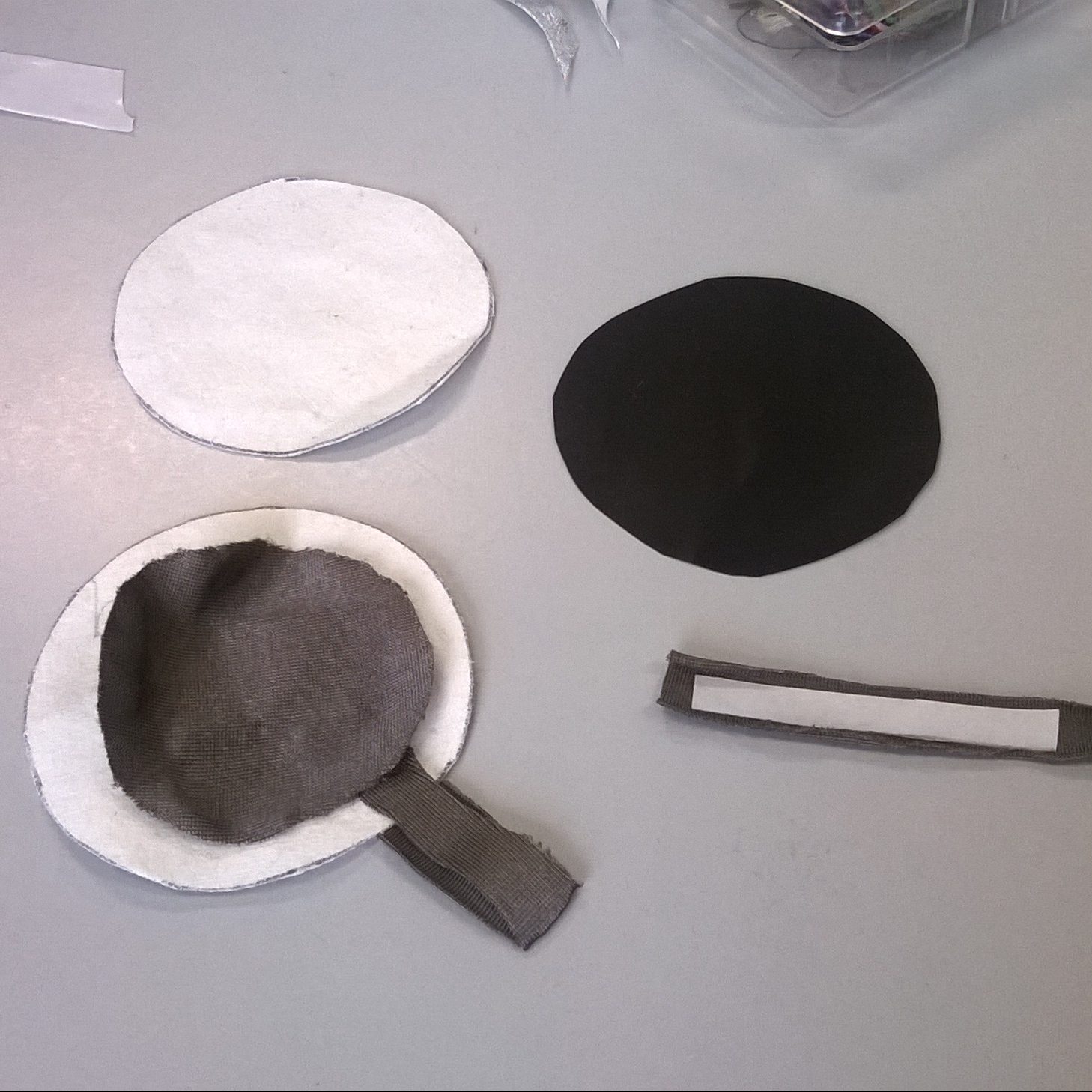
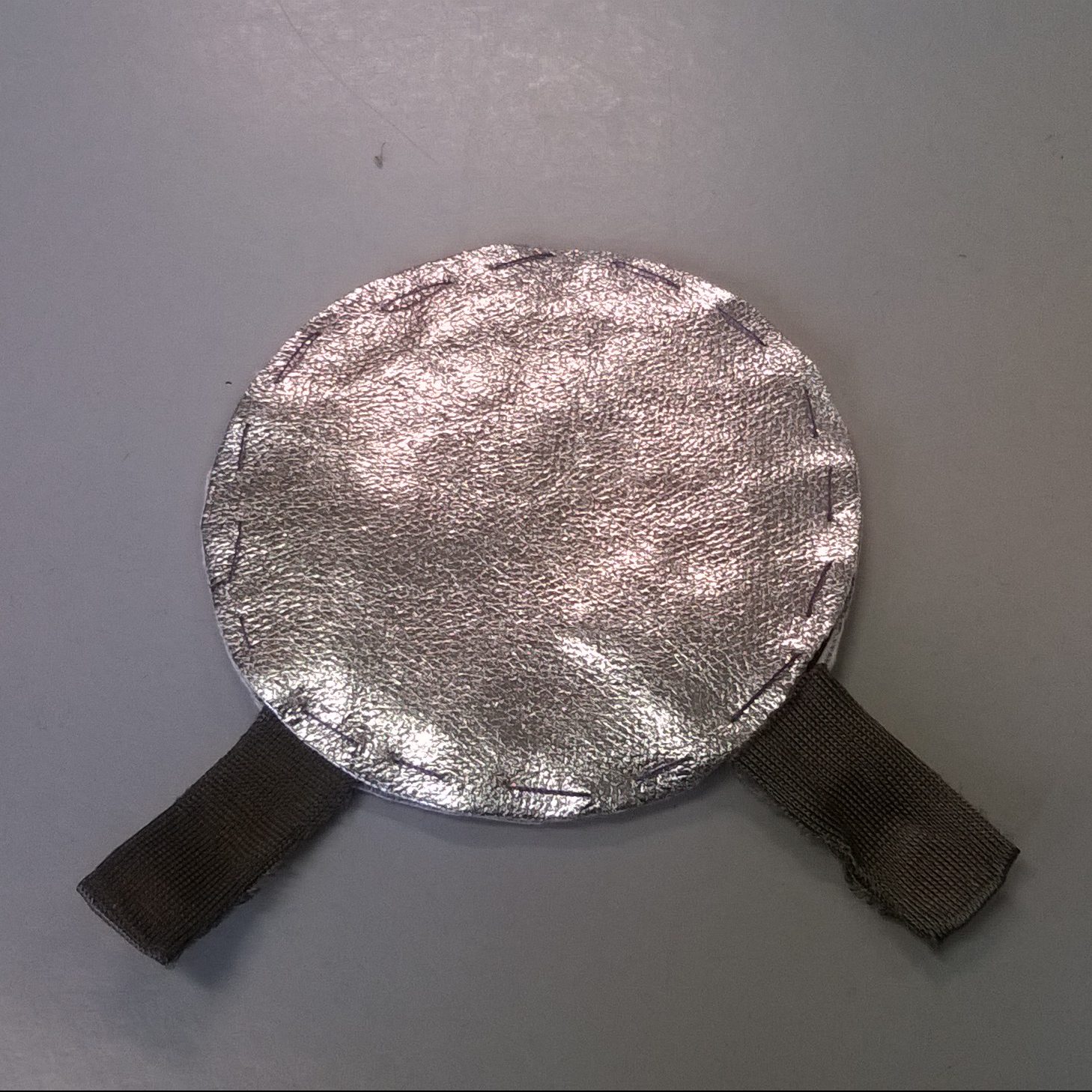
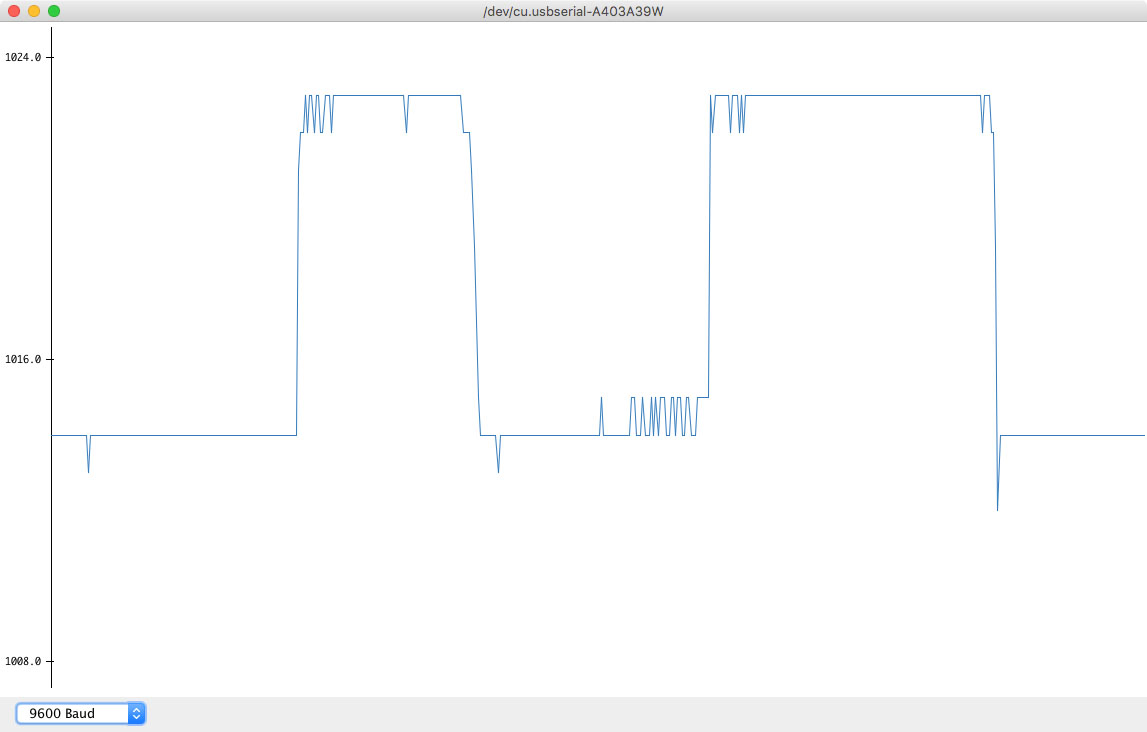
Pressure Sensor 2
The principle is the same as in the first sensor, just added two layers of foam outside of the conductive fabric, to have achieve the feeling of actually pressing something.
The results are similar to the ones of the first sensor.
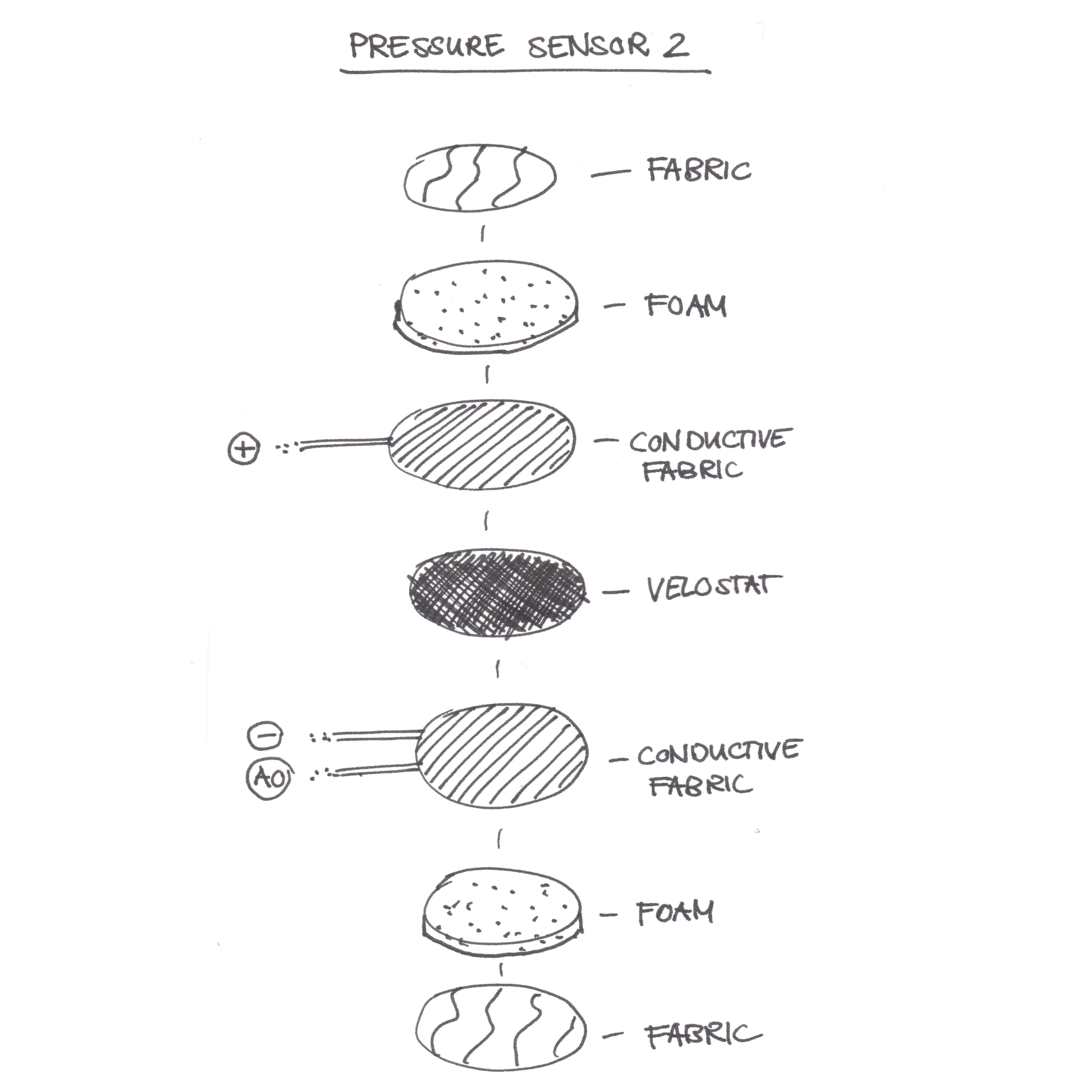
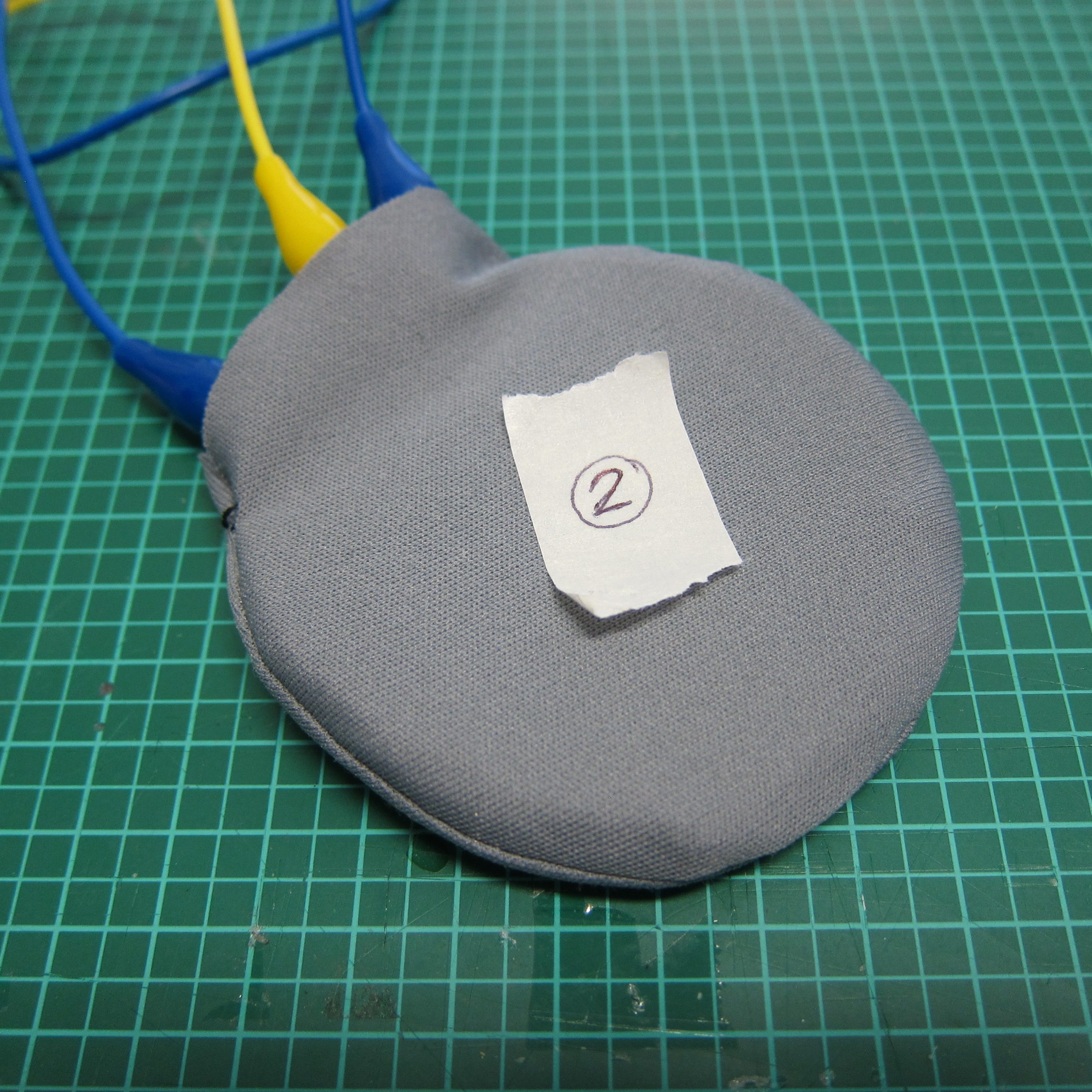
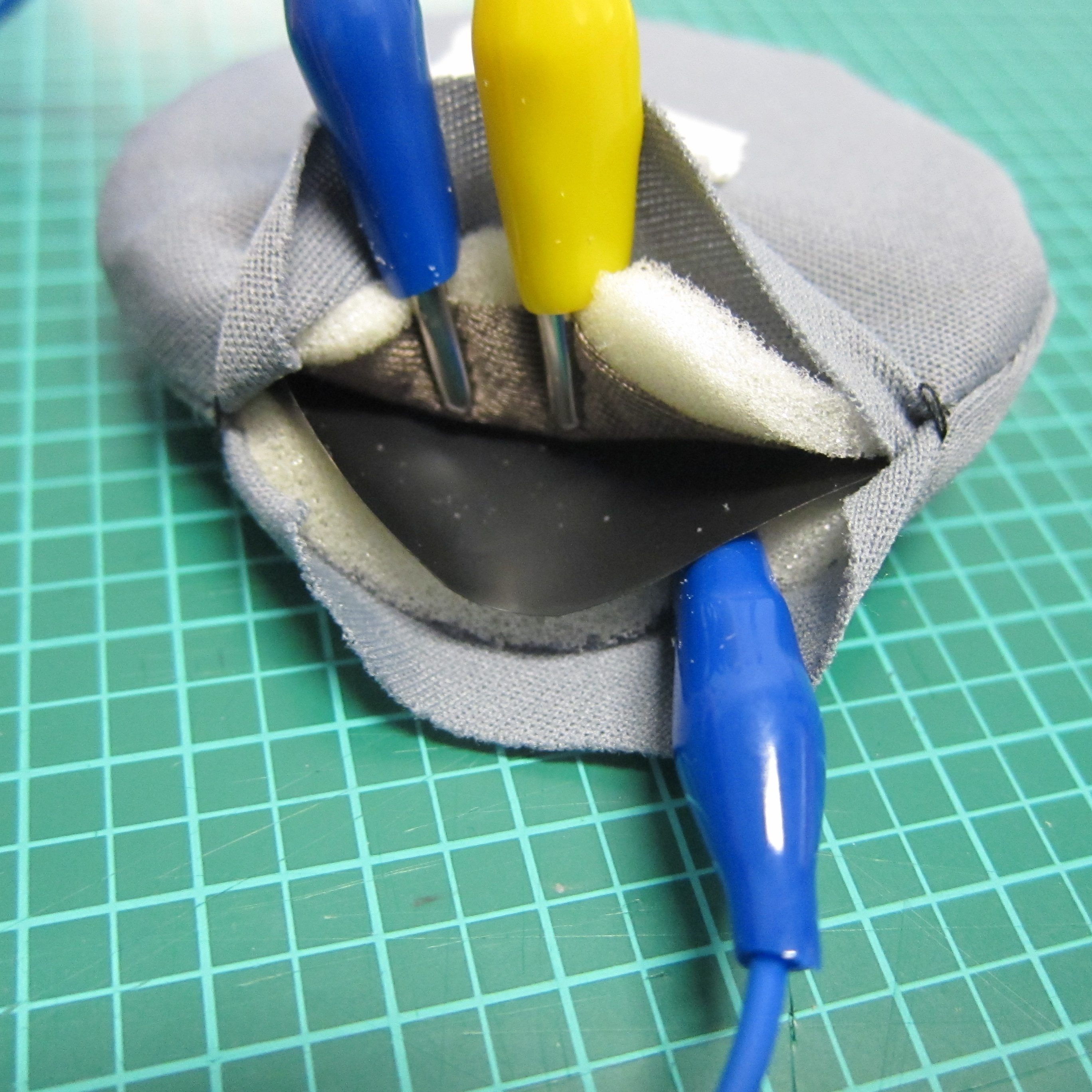

Pressure Sensor 3
With the same idea of adding a haptic response to the sensor, this one is made with some "memory foam" instead of usual foam. This "memory foam" is usually used in pillows and cases and takes the shape of something pressed on it. After a while it goes back to normal shape.
I thought it could maybe add some more range to the output values when you press it, but exactly the opposite thing happened. It is possible to still sense the moment of pressure, but not really stable and only a very small range.
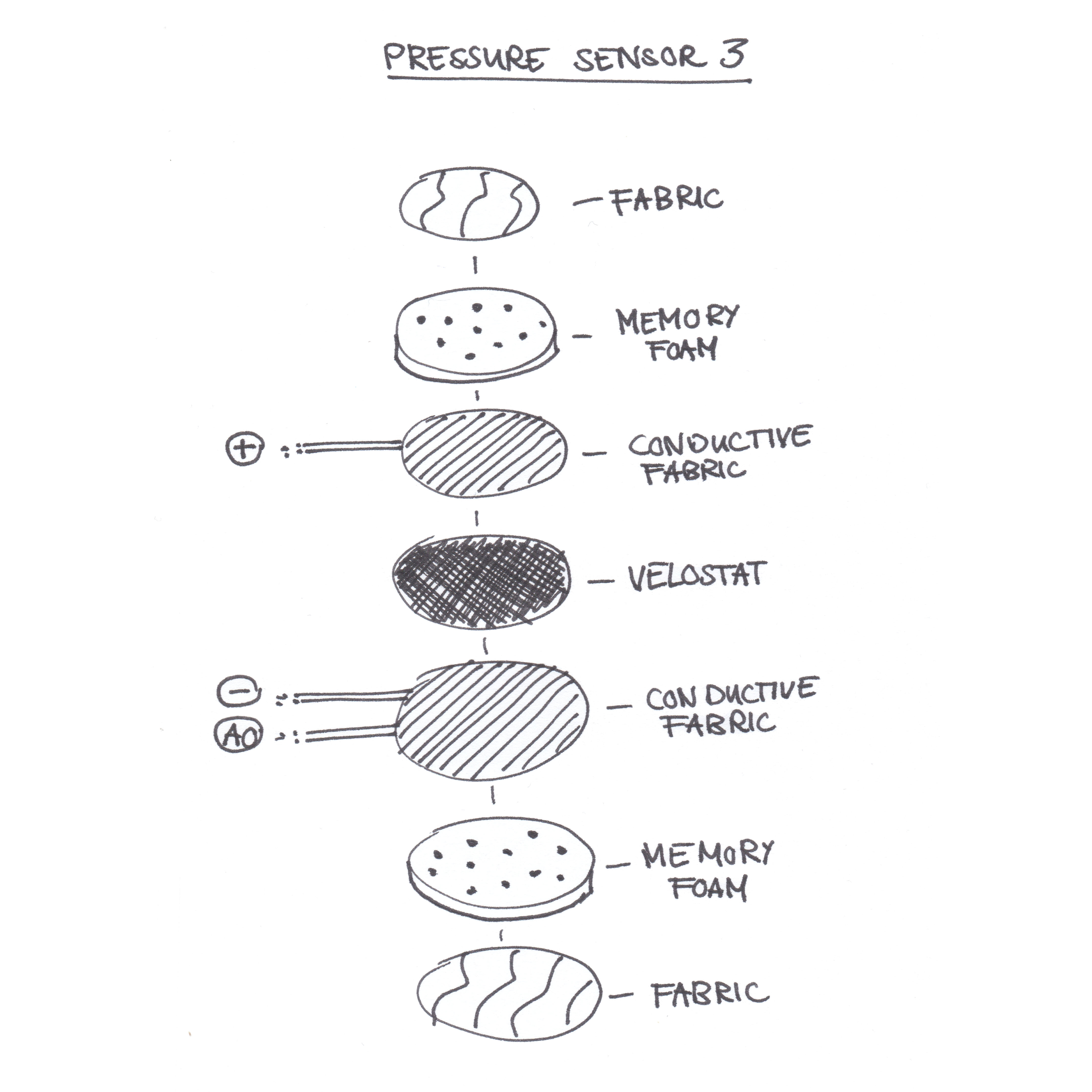
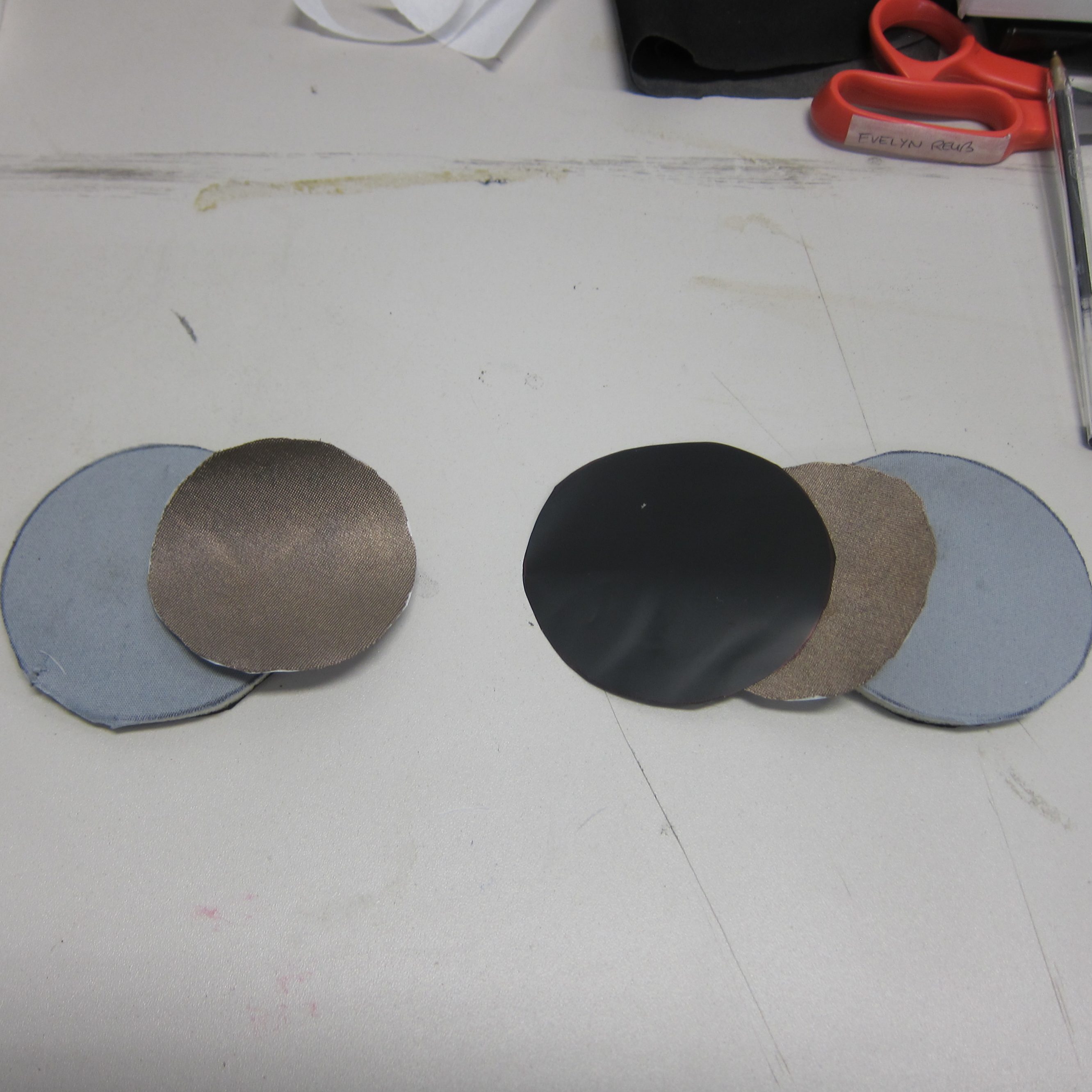
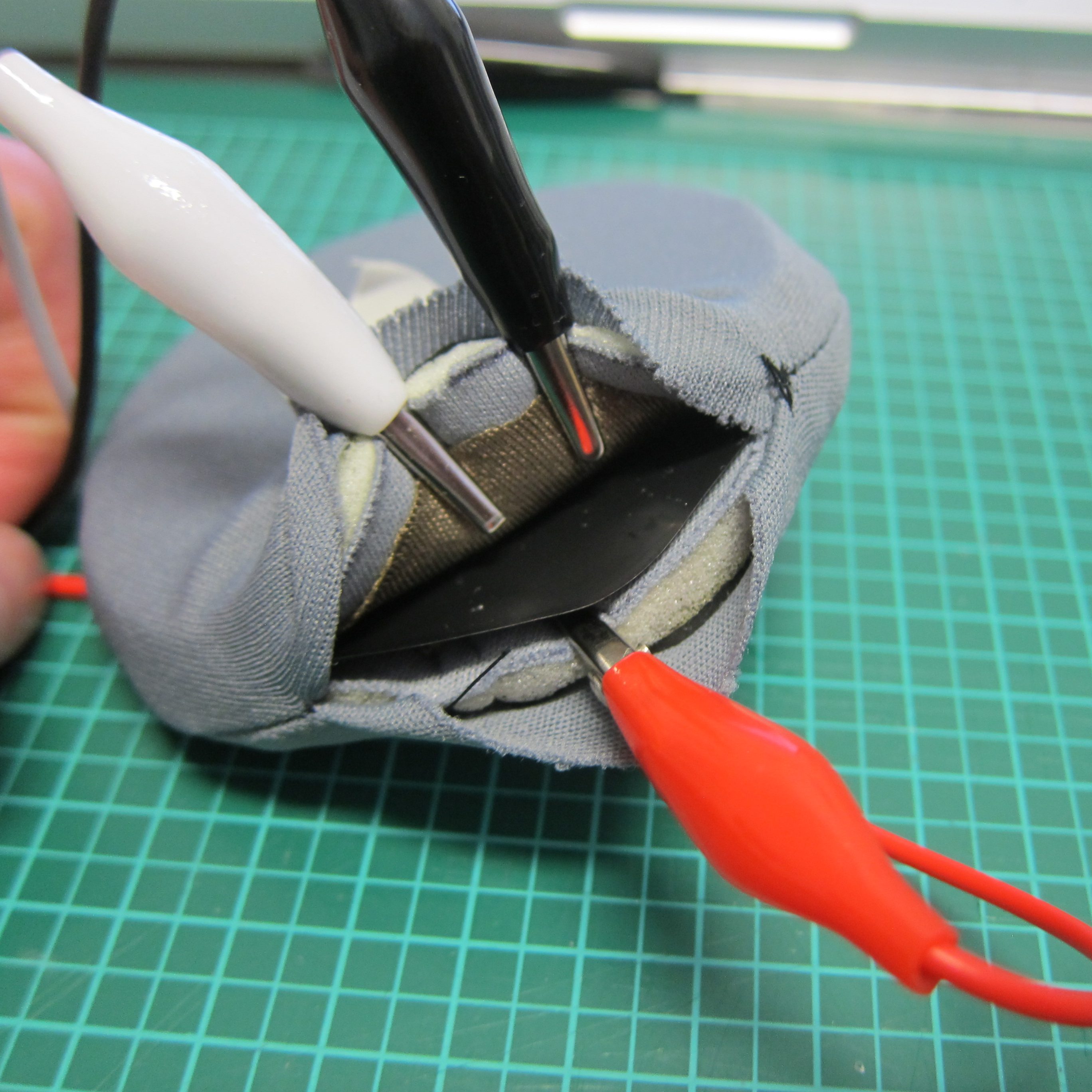

Pressure Sensor 4
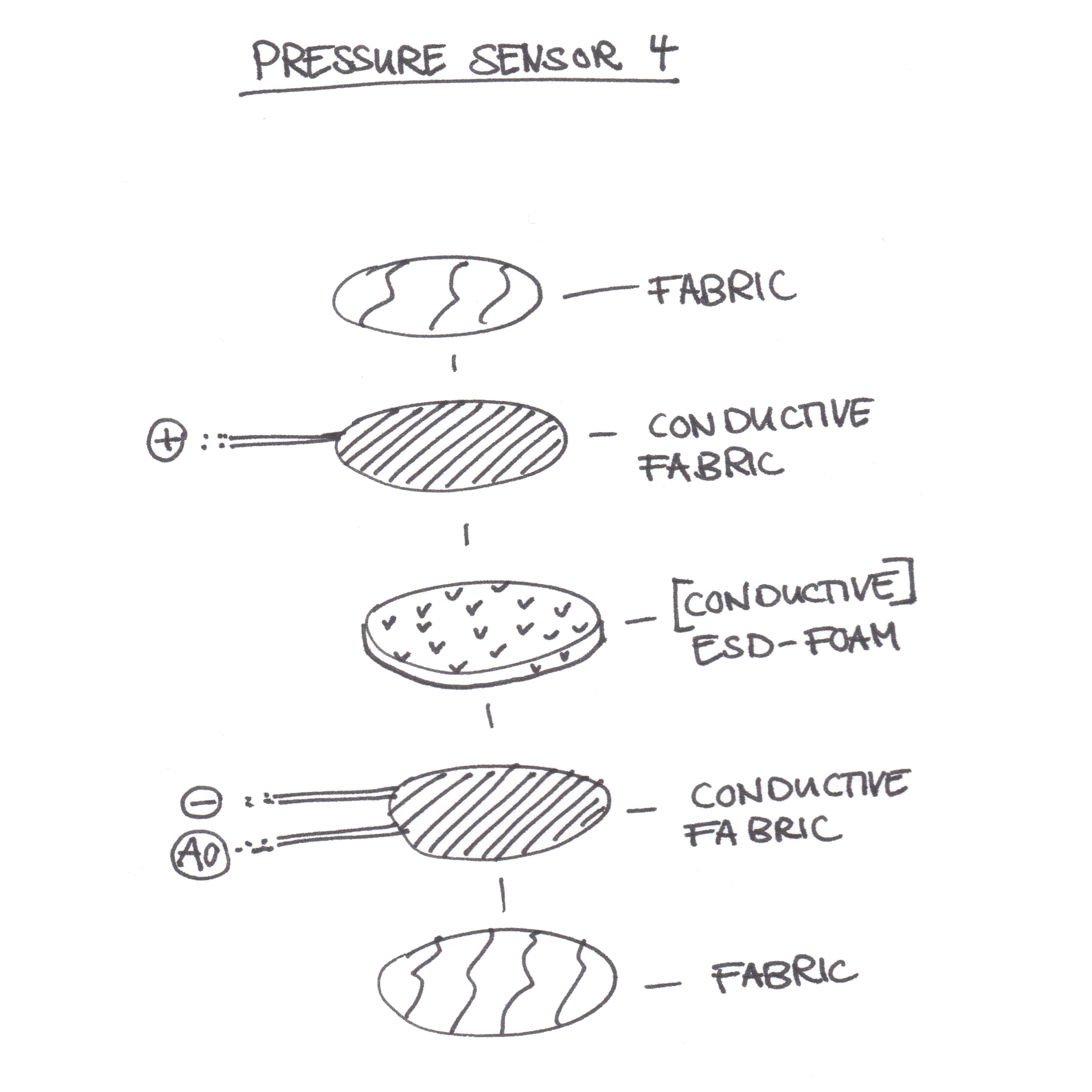
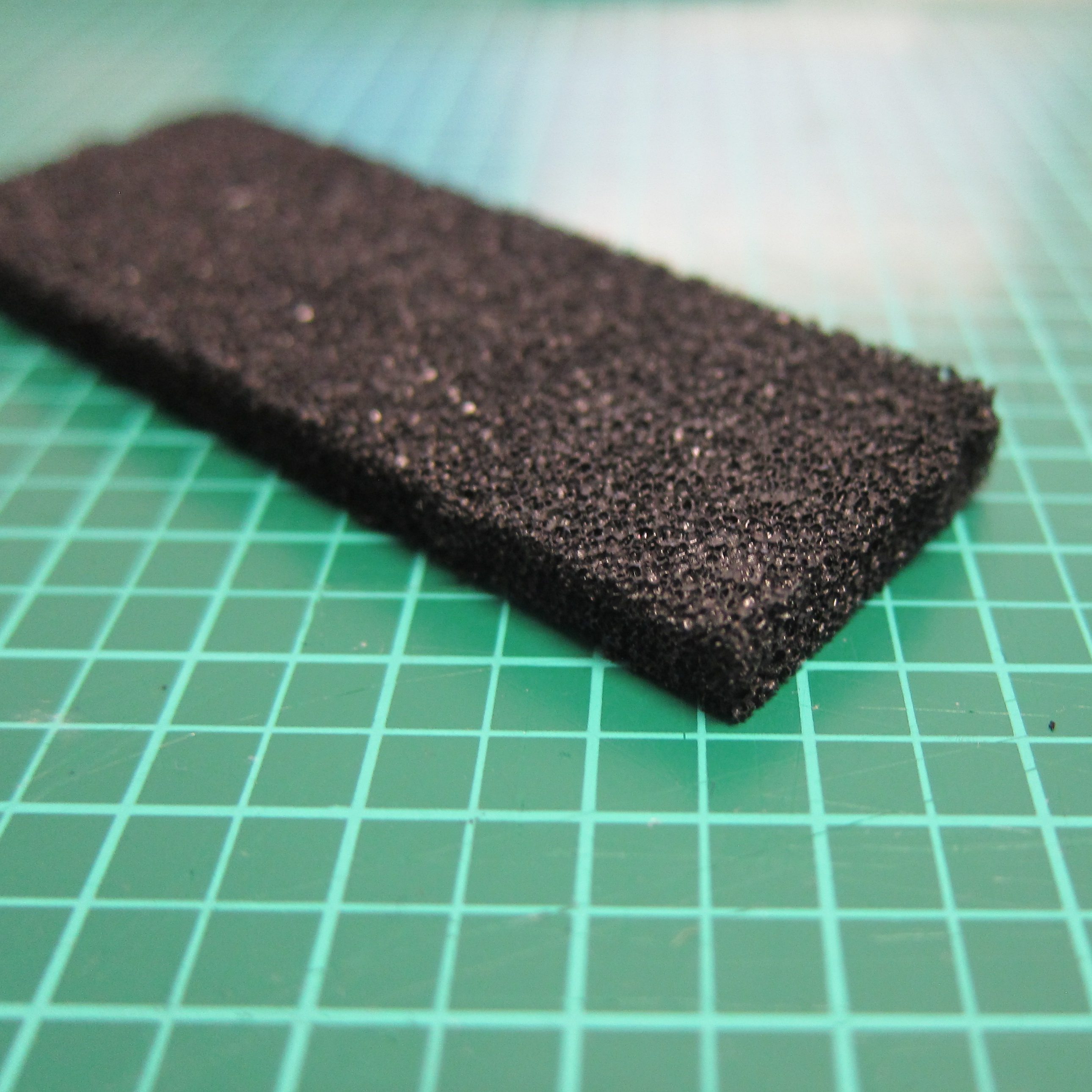
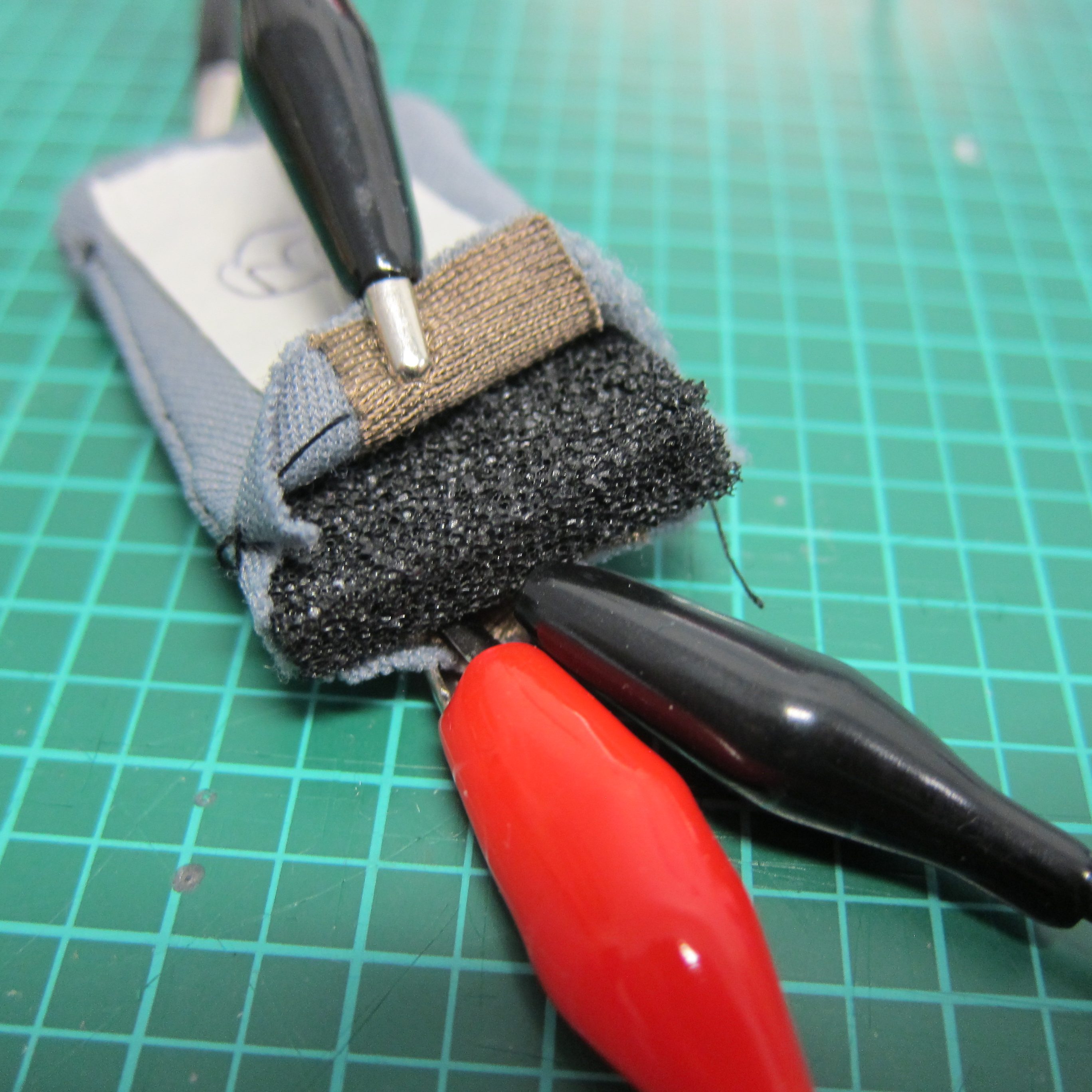

Pressure Sensor 5
This sensor is made out of materials of the "Sensor Film Kit" (www.sensorfilmkit.com), which are aluminium foil and "sensor film" which is probably the same as Velostat and an adhesive foil to hold it together. It works very well in terms of really sensing the amount of pressure you apply to it.
This sensor is not made out of fabrics, but as it is really thin and it can be
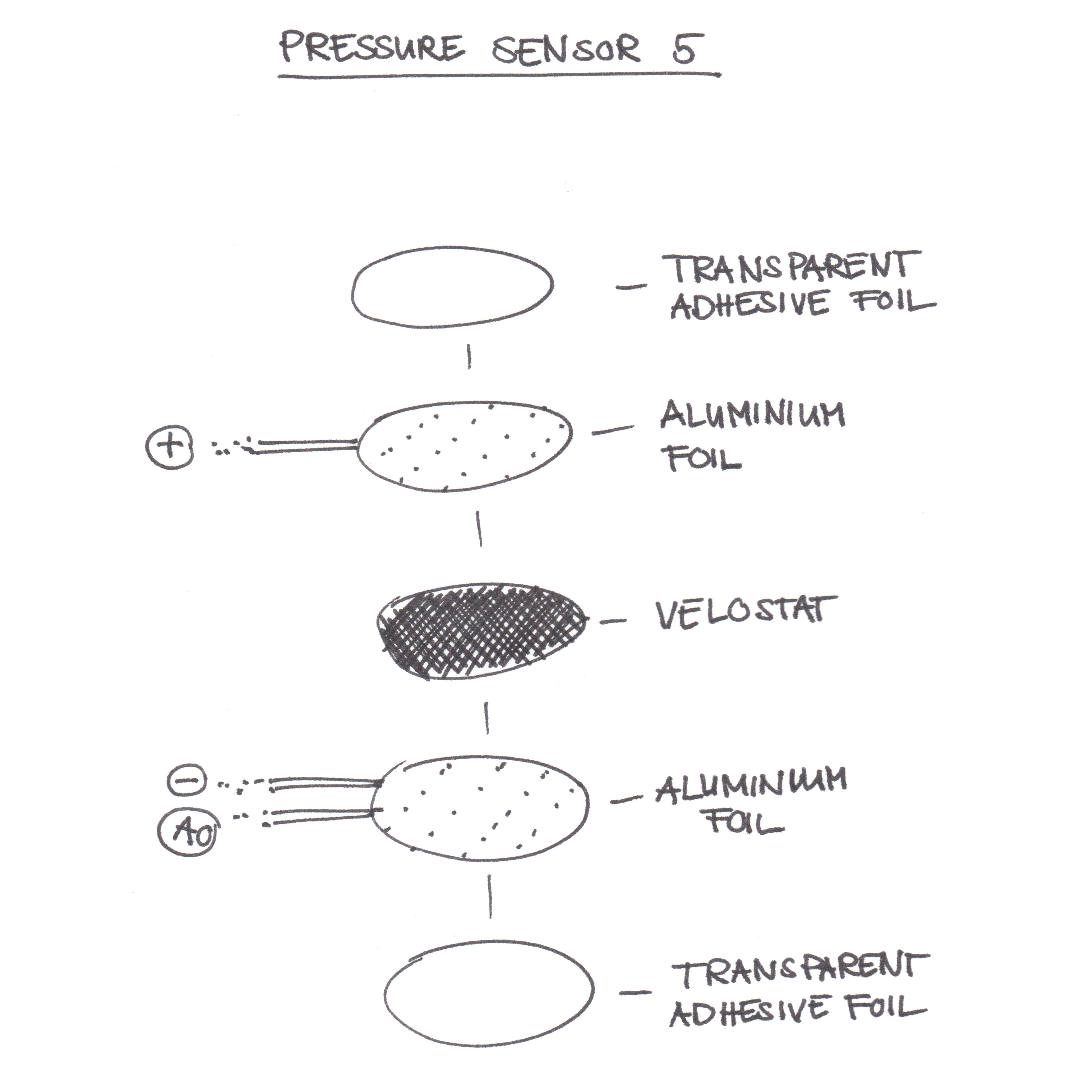
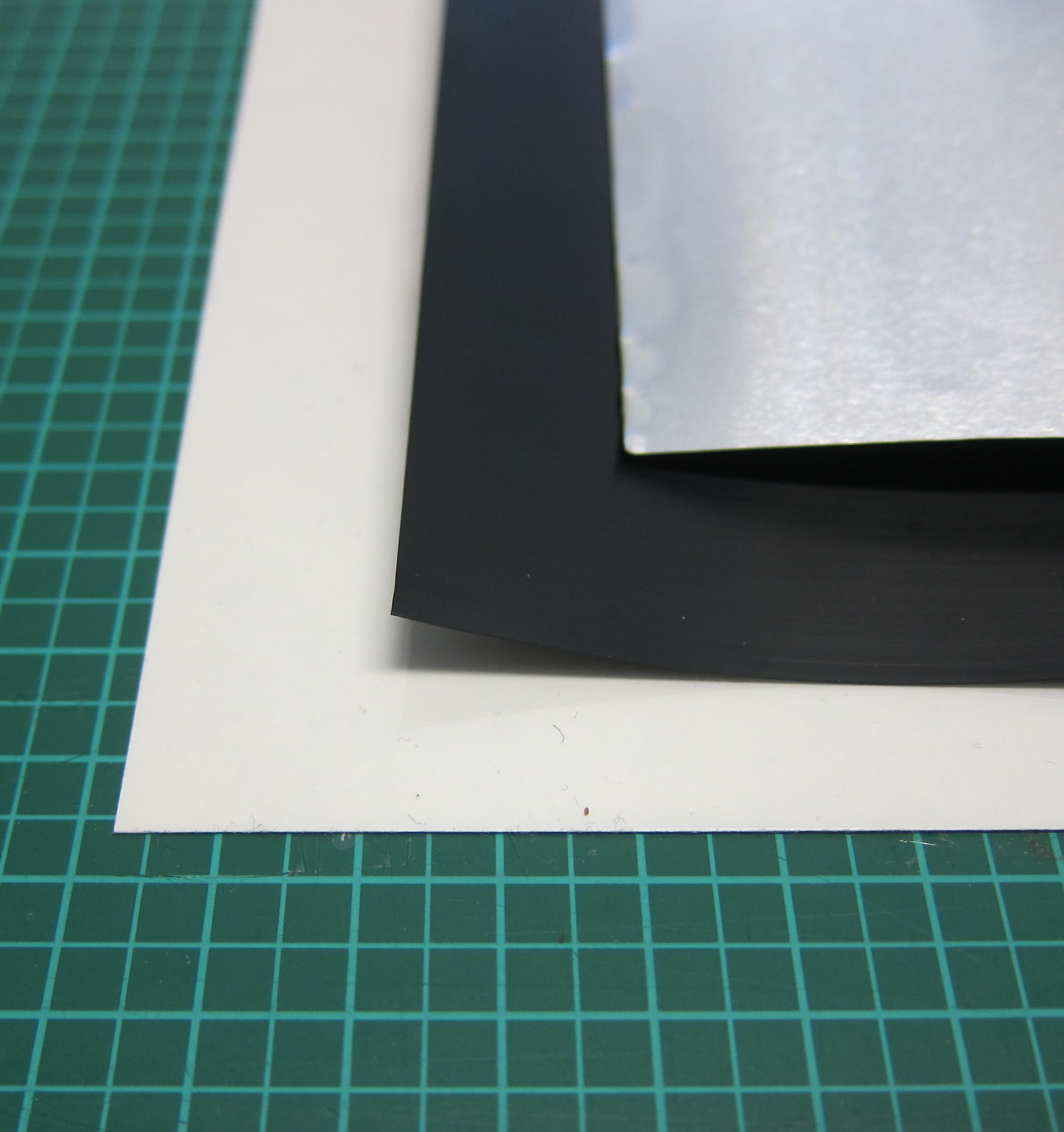
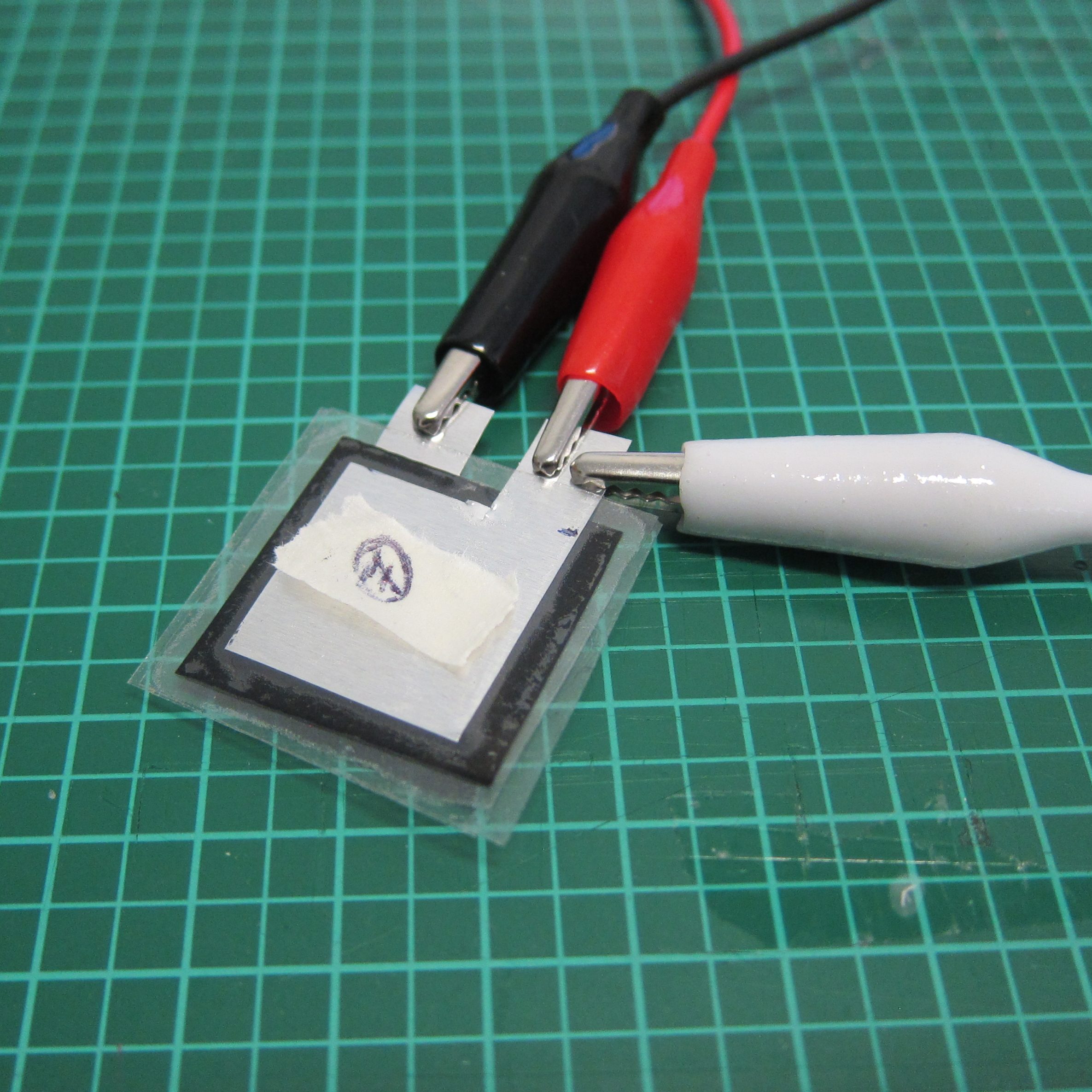


Pressure Sensor 6
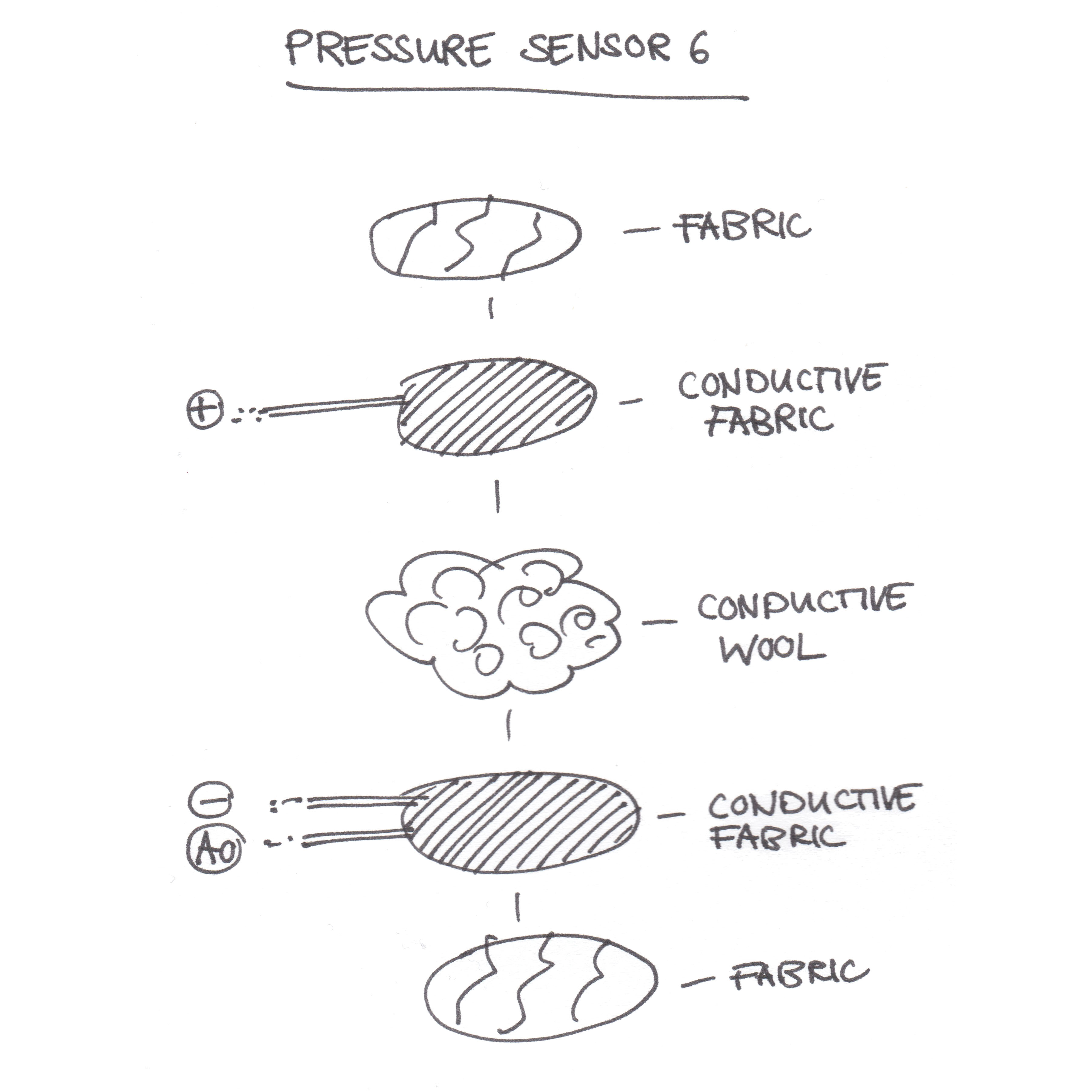
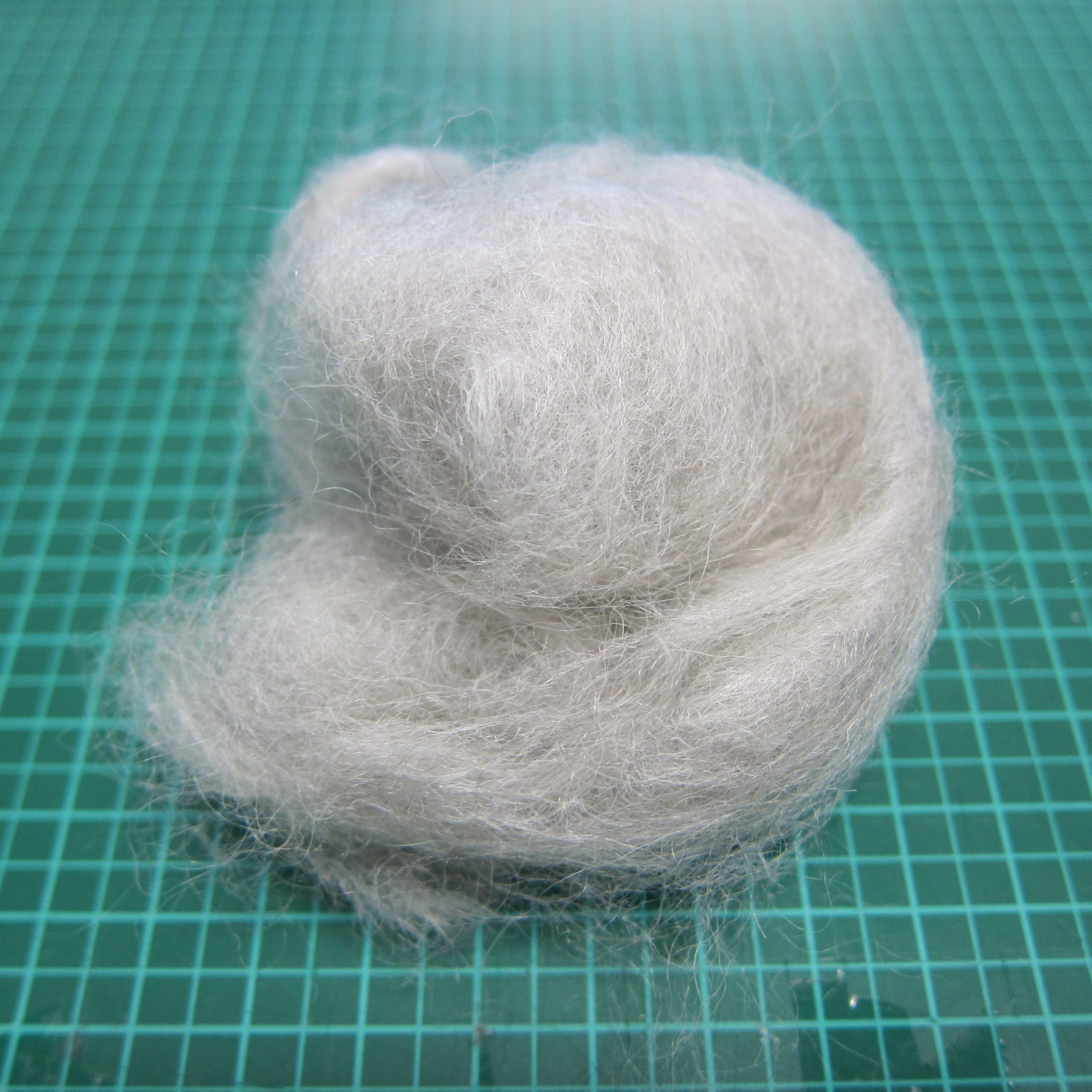
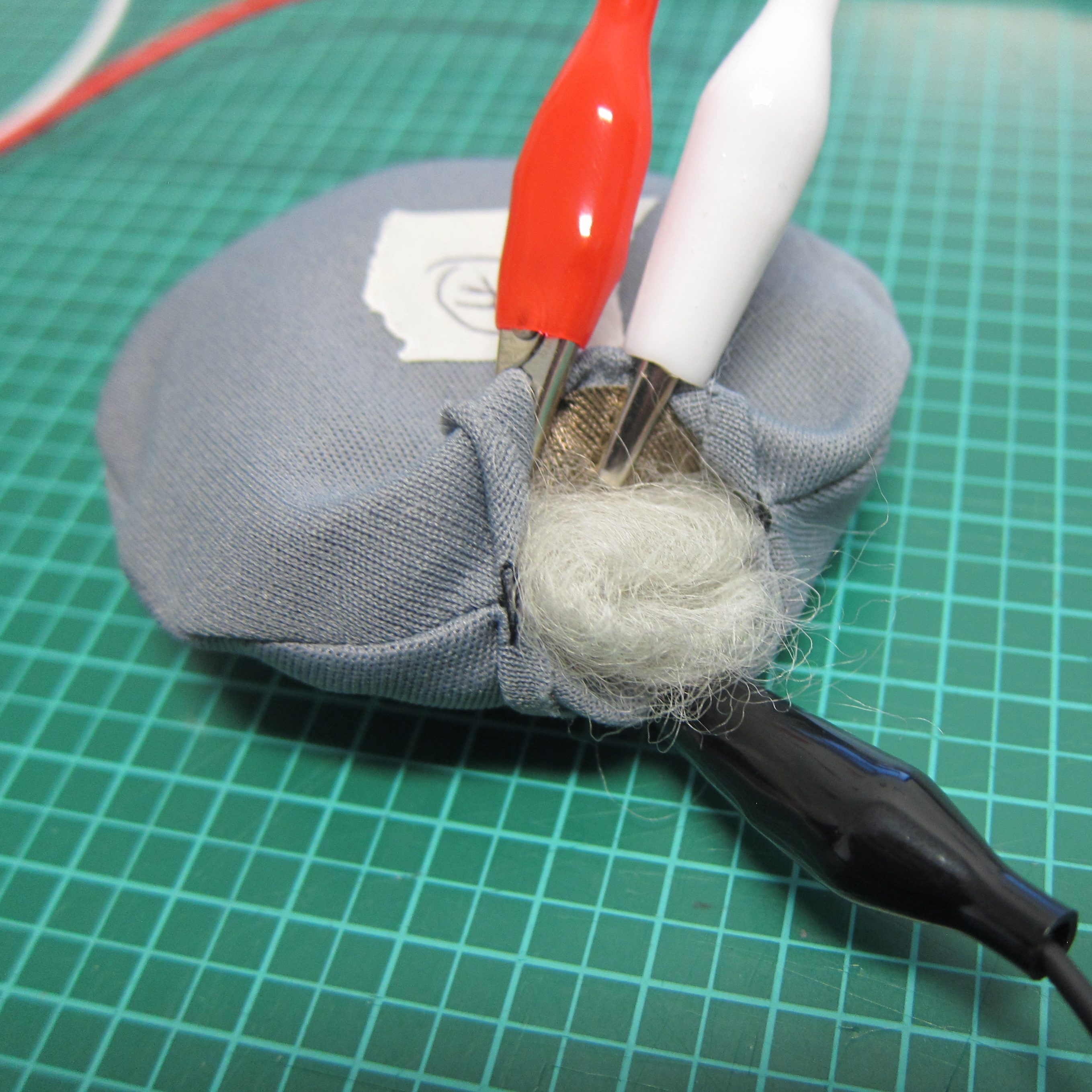

Pressure Sensor 7

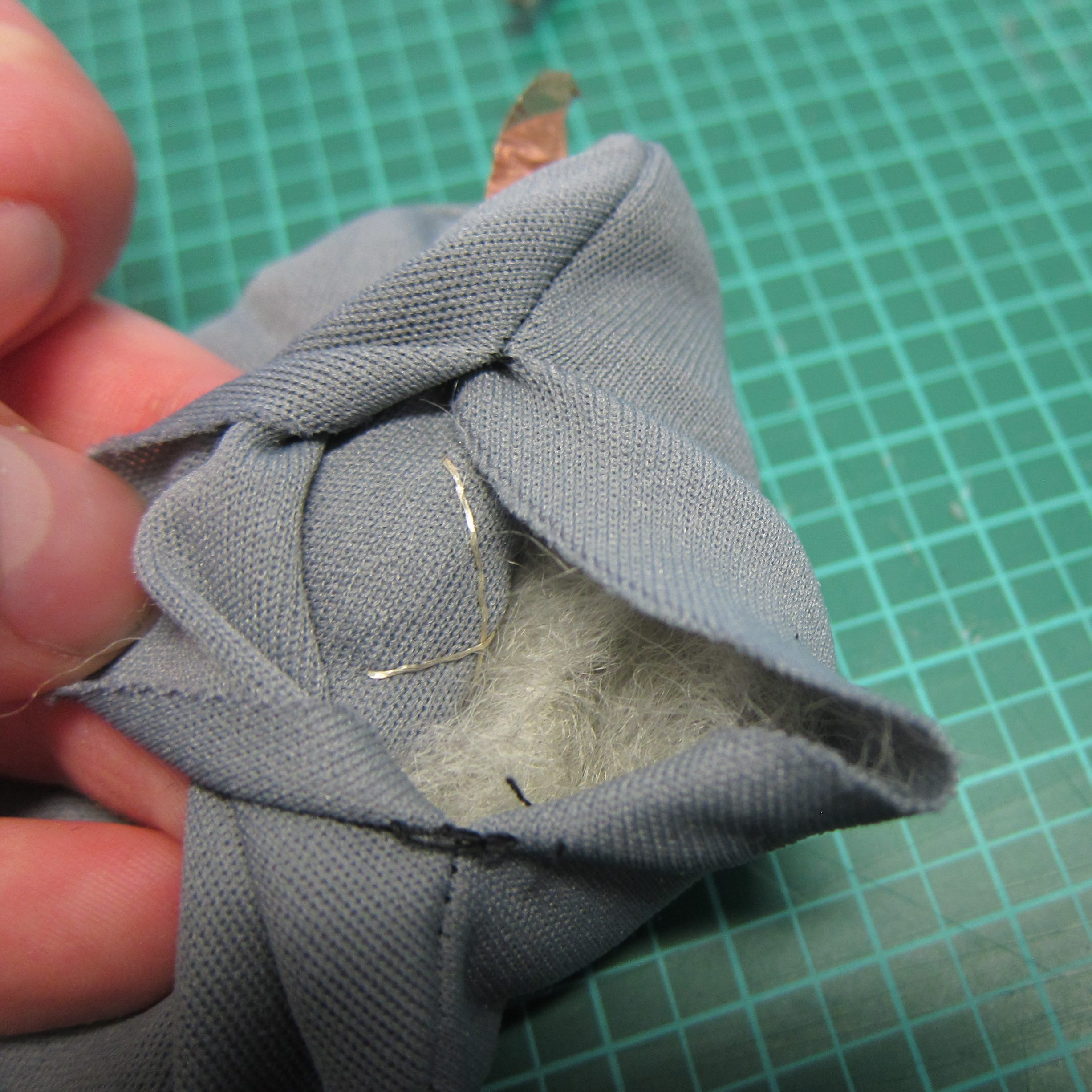
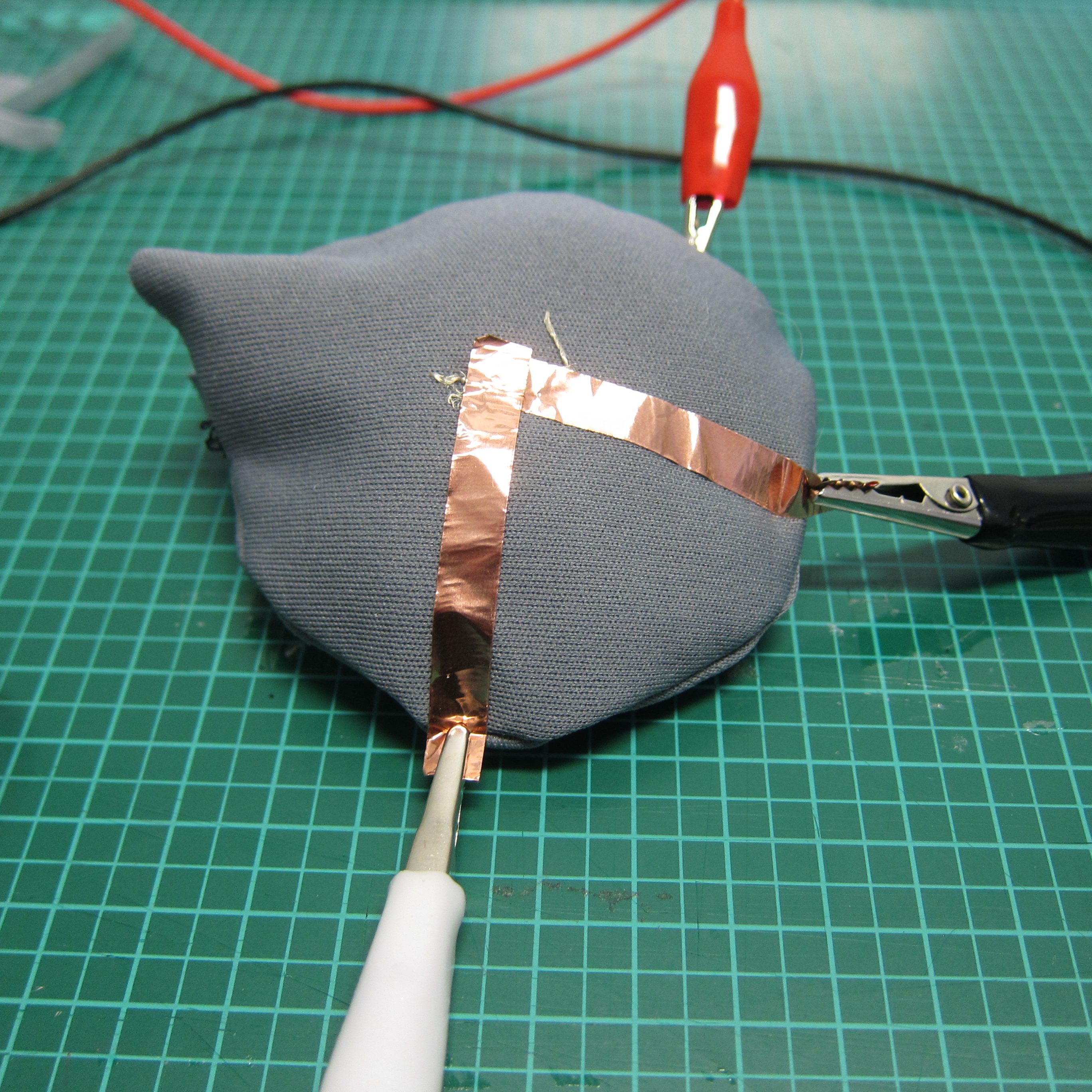

Pressure Sensor 8

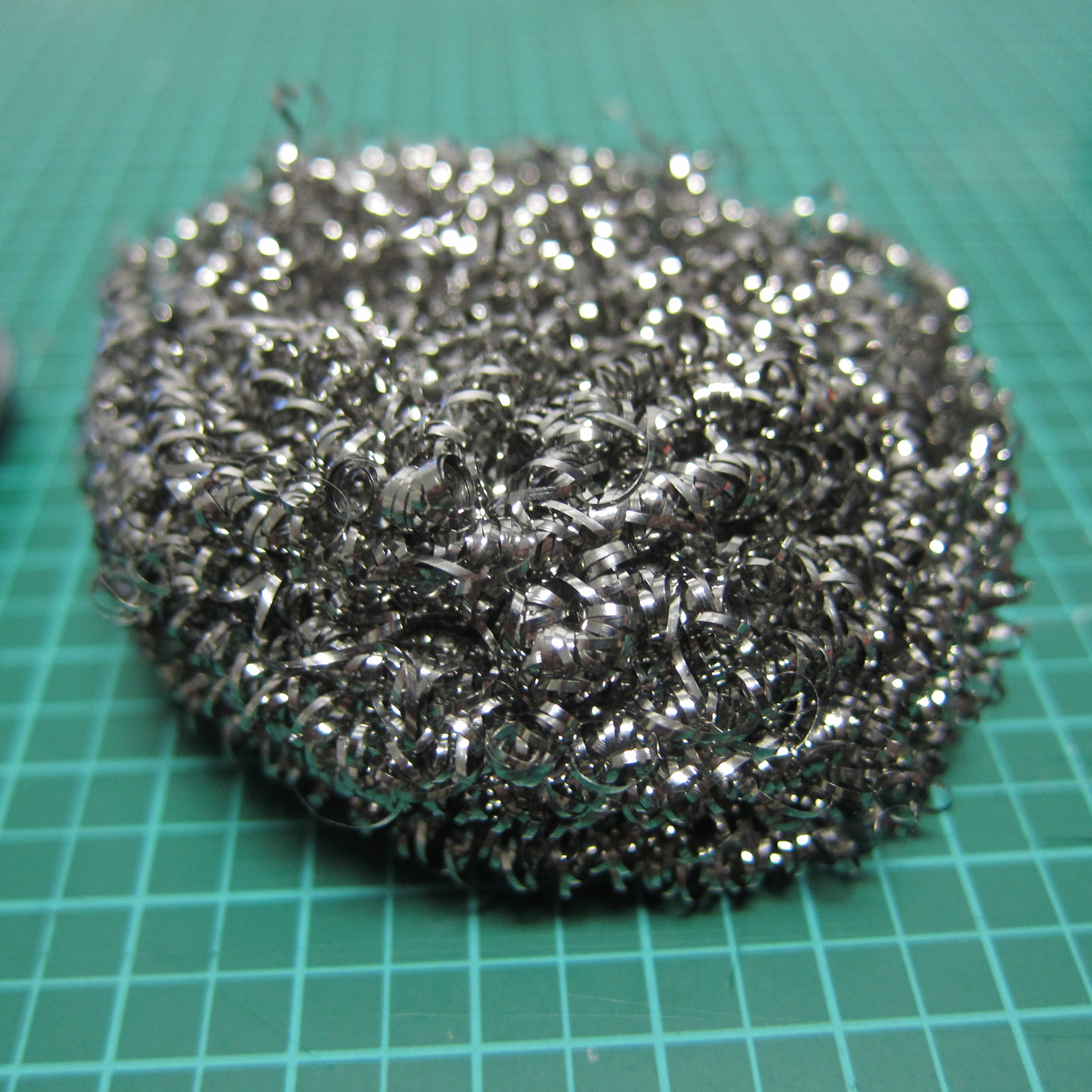
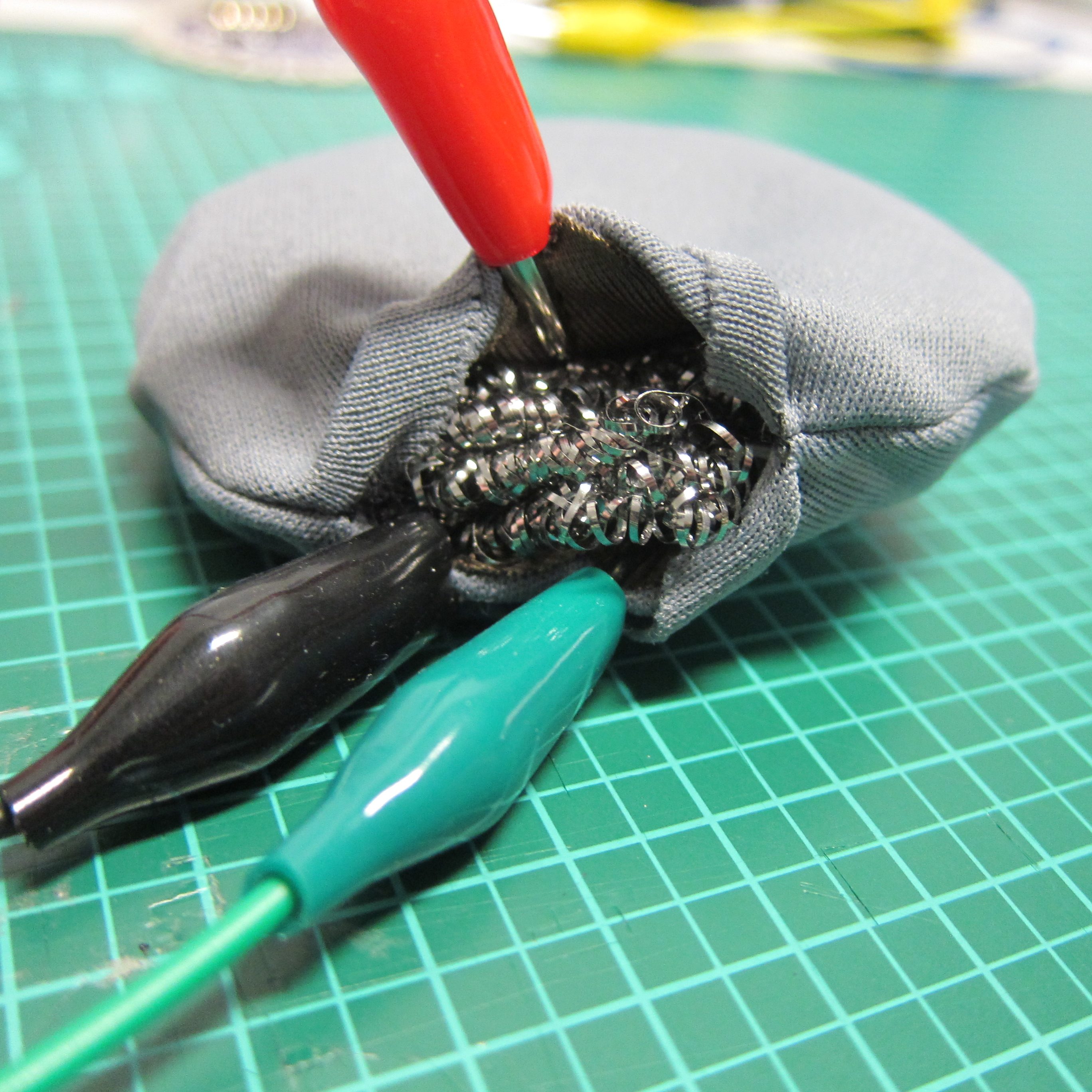

Non-working experiments
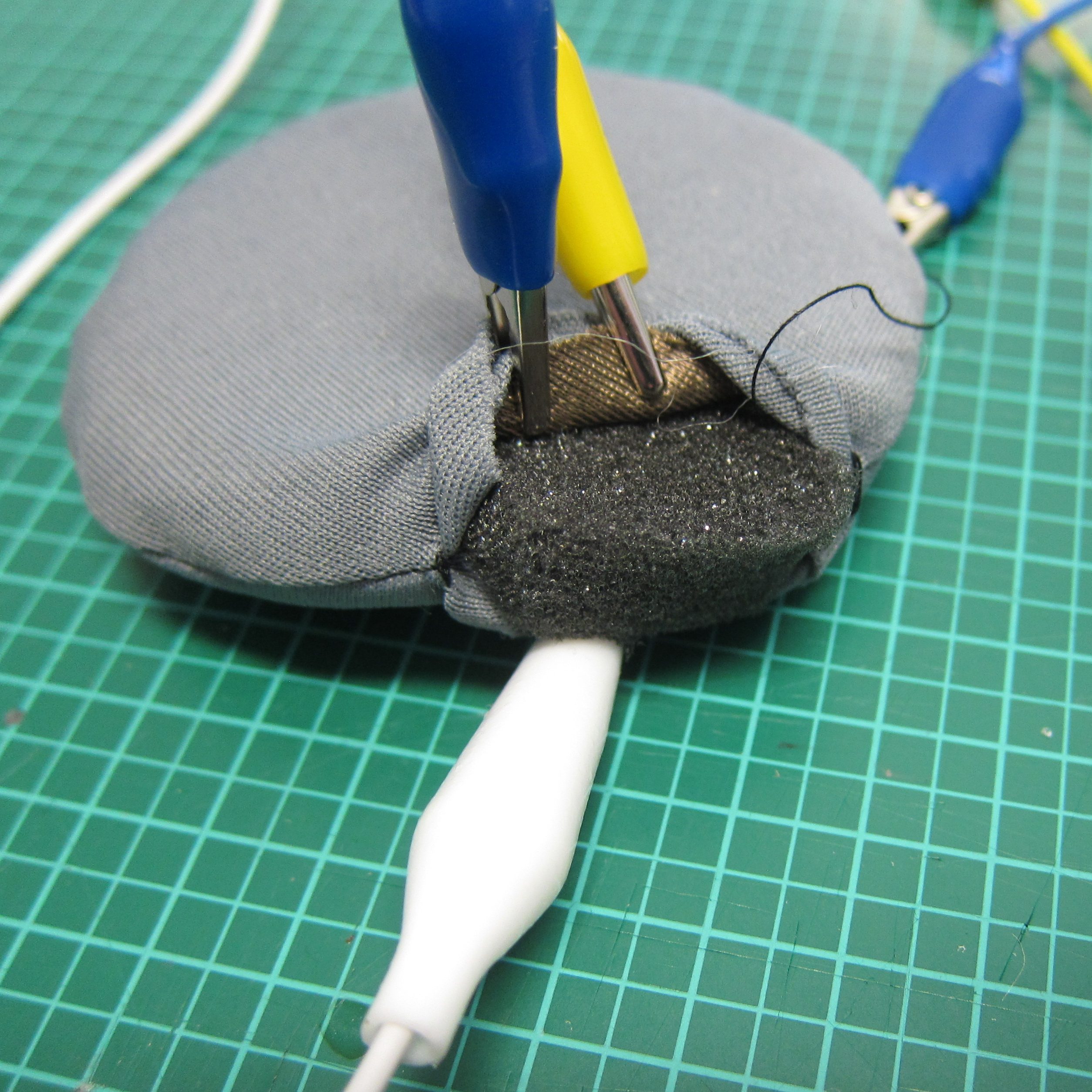
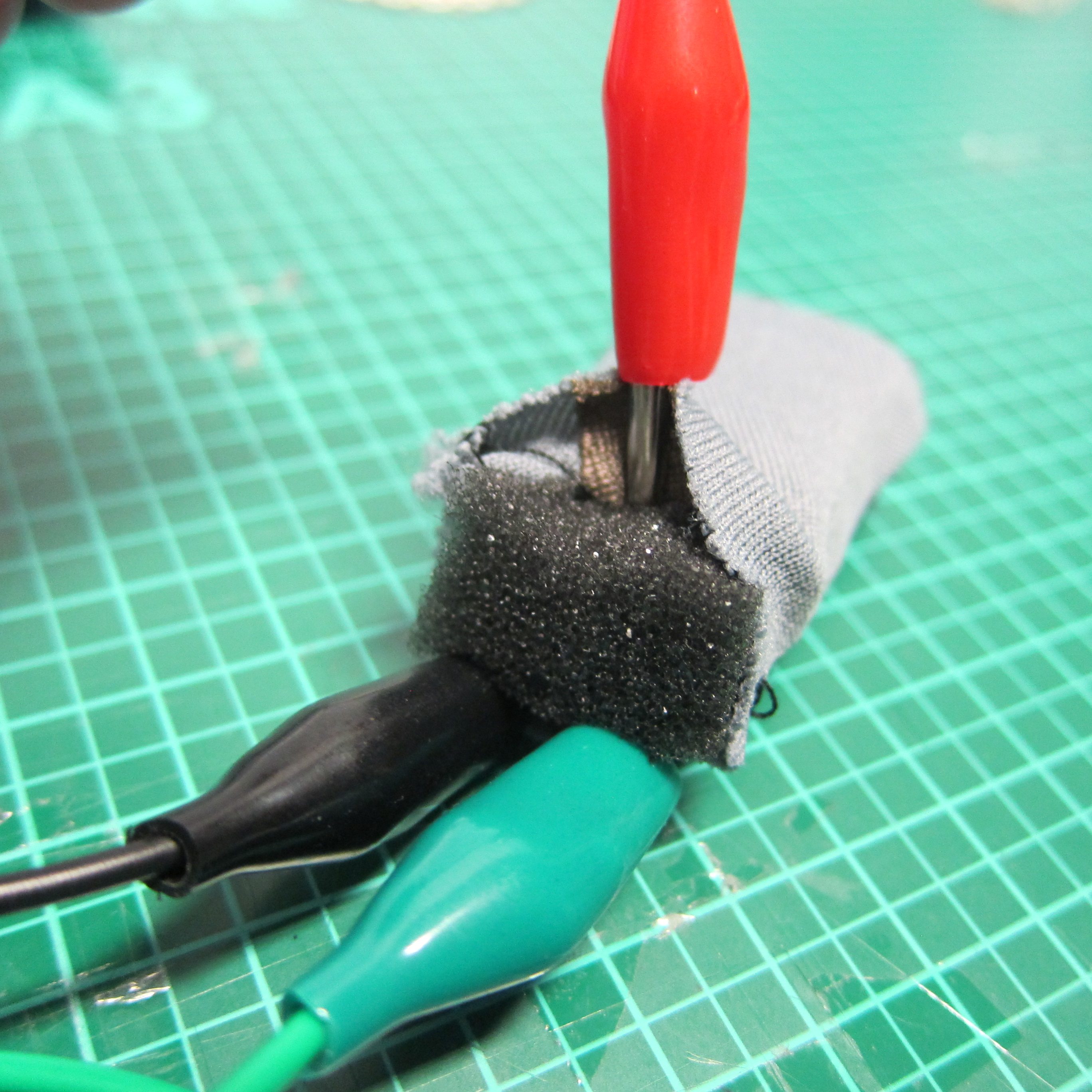
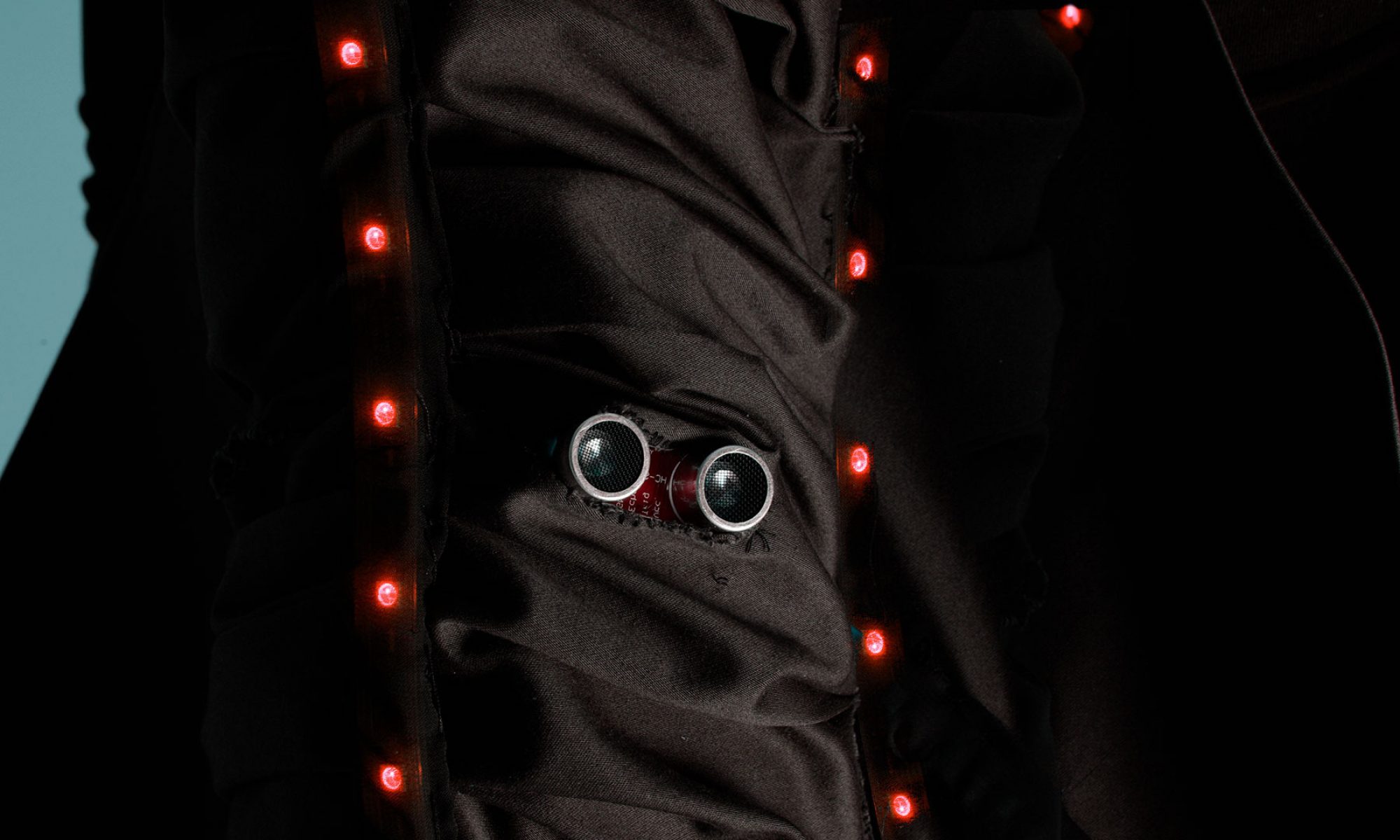

5 Replies to “Pressure Sensor Experiments”
Comments are closed.